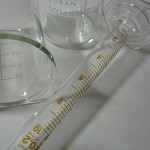Why Standardization Matters
 The greatest advancement in herbal supplements arrived with the manufacturing process known as standardization. Standardization allowed herbal supplements to achieve the reliability and assurance of pharmaceutical preparations.
The greatest advancement in herbal supplements arrived with the manufacturing process known as standardization. Standardization allowed herbal supplements to achieve the reliability and assurance of pharmaceutical preparations.
Furthermore it allowed for scientifically controlled studies of their efficacy as remedies and preventives for various health conditions. This article will discuss the process of standardization and what to look for in a standardized product.
Why Standardize Herbal Supplements?
The amount of active ingredients in plants can be highly variable depending on a variety of factors such as when, where and how harvested, type and length of storage before processing and the extraction process itself.
Therefore the most concentrated extract of an herbal product could be ineffective and a waste of money if extracted from inferior plant material or in an improper manner.
Hence the need for standardization.
What is Standardization?
Standardization is a process whereby a known amount of an active ingredient from a specified herb, plant or mushroom is packaged into each unit (capsule, softgel, liquid) of a natural products supplement.
This is usually achieved by using a extraction process to concentrate the active ingredient and always involves chemical analysis on samples of the final product.
As an example, let’s look at Swanson Health Products’ “Green Tea Extract” which comes in a variety of forms.
Most of us are familiar with green tea and its health benefits due to their antioxidants. Some may be familiar with the term “green tea polyphenols” which are a class of compounds with antioxidant and health promoting properties.
A standardized extract of green tea will be some percentage or amount of polyphenols present in the product.
One product comes standardized for 60% polyphenols of 100 mg of extract per capsule. Therefore it is guaranteed to contain 60 mg (100 mg x 0.60 = 60 mg) of a mix of polyphenols per capsule.
Another product comes standardized to 60% polyphenols of 200 mg of extract per capsule. Therefore it is guaranteed to contain 120 mg (200 mg x 0.60 = 120 mg) of a mix of polyphenols per capsule.
Among the mixture of green tea polyphenols there is one in particular that seems to be most effective especially for weight loss and is called epigallocatechin gallate or EGCG.
Swanson Health Products makes a product that is standardized to 90% EGCG of 168 mg of extract per capsule for a total of 150 mg EGCG (168 mg x 0.90 = 151.2 mg) per capsule.
The bottom line should be the total amount of active compound in mg (milligrams) per unit (capsule, softgel, liquid). The consumer should be able to readily determine this from the label.
Of course one pays more as the product becomes more concentrated and more specific.
What to Look for in a Standardized Extract
Probably the first thing to look at is the label on the product.
Does is say “Standardized Extract” and not just “Extract”?
If so, does it clearly state what compound for which is standardized and how much is present in each unit? As in the green tea example above which is standardized for 90% EGCG of 168 mg of extract for a total of 150 mg of EGCG per capsule.
The consumer should be aware that even the most meticulously documented standardized extract may be present in too low of quantities to be effective. This is especially true of formulas with multiple ingredients.
Most active ingredients of herbal products provided on the market would not be effective until levels of 50 mg and more likely in the 150 to 200 mg level of the standardized compound.
Remember this is the amount in mg of the active ingredient and not the amount in mg of the extract.

No Comments